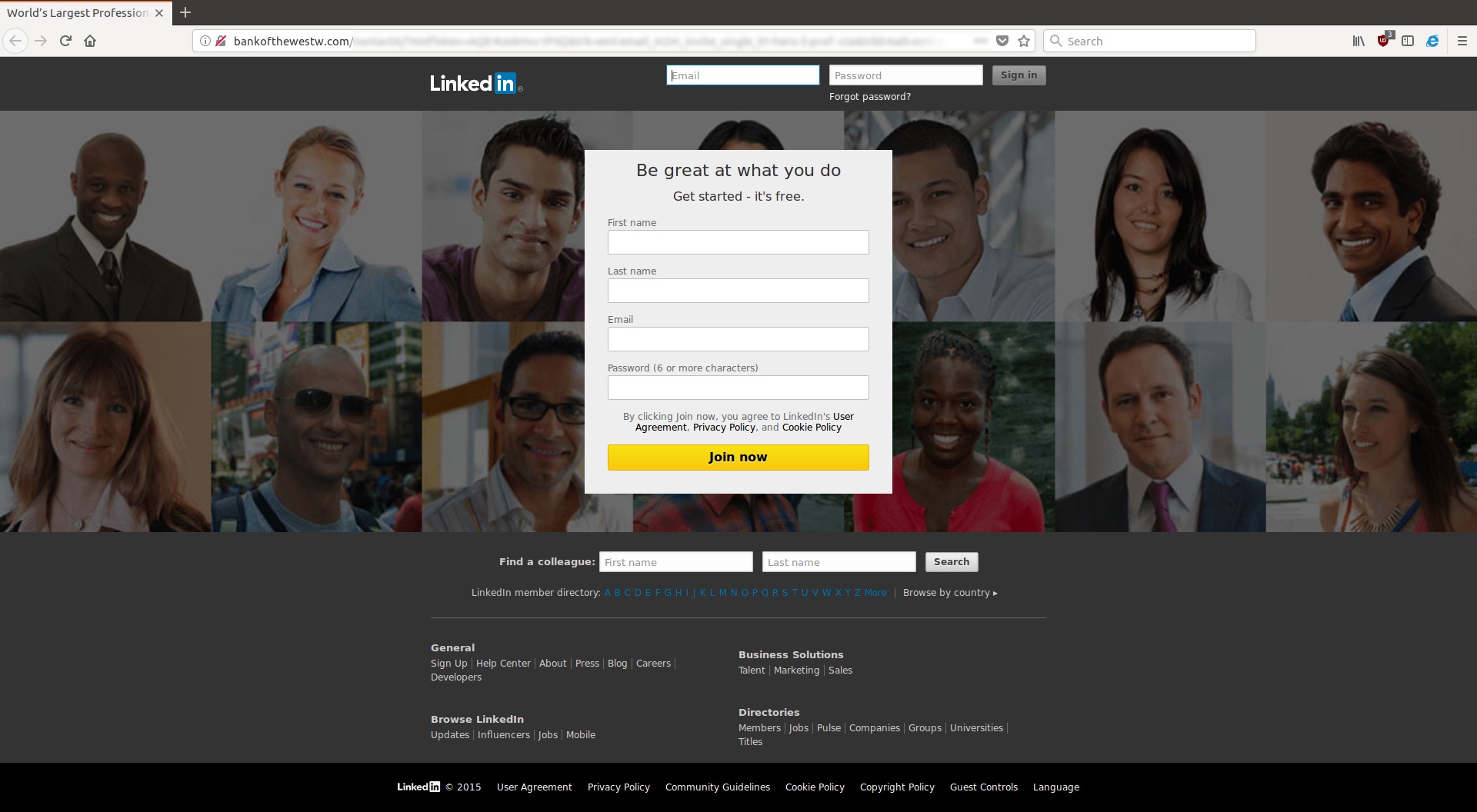If you get a LinkedIn networking invitation from “Professor Barry James Marshall” in your inbox don’t click.
MailGuard has discovered that the fake LinkedIn notification email shown in the screenshot above, is actually a phishing scam designed to harvest your LinkedIn login credentials.
A search of LinkedIn reveals that “Professor Barry James Marshall” is a bogus account name that doesn’t exist.
An unwary LinkedIn user who clicks on the links in this malicious email will be directed to the phishing page shown below:

Although this phishing scam is quite well designed and looks realistic, the sole purpose of the login page shown above is to hijack the victim’s LinkedIn username and password.
Please help us alert people to this phishing attack by sharing this blog post on your social media; click the buttons at the top of this post.
What is "phishing?"
Phishing is the practice of tricking email recipients into revealing personal information that criminals can exploit for gain.
Phishing emails go to a wide group of random people; it’s like a fisherman casting a wide net to see what he can catch. The attackers know that not everyone will respond, but they know that if they send enough emails out somebody will probably take the bait.
A phishing attack message will typically include a link that will send the unwary victim to a fake login website. Once there, the user will be asked to enter username and password data which will be automatically captured by the phishing page.
Scammers use phishing pages to collect login credentials for email accounts, bank accounts, and a wide range of other online services.
Stay up-to-date with new posts on the MailGuard Blog by subscribing to free updates. Click on the button below:







